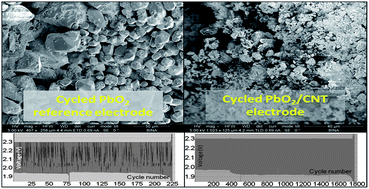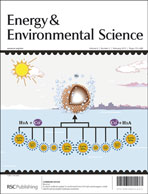Towards promising electrochemical technology for load leveling applications: extending cycle life of lead acid batteries by the use of carbon nano-tubes (CNTs)
Abstract
Lead acid (LA) batteries are an established mature technology mainly used for low energy density applications. Crumbling/sulfation is the main failure mechanism of the active materials, which limits their cycle life. LA batteries possessing long cycle life can serve as an ideal energy storage technology for load leveling applications. By uniformly adding properly oxidized CNTs to the positive active material of LA batteries, we achieved a pronounced improvement in their cycle life. This improvement was mainly attained by the formation of a stable conductive grid that enabled the delivery of current to all the active material. The grid consisted of composites made of CNTs conformably coated with lead salts. By enabling a uniform electron distribution, and subsequently proper electrochemical redox reactions, the formation of too big PbSO4 particles did not occur, thus changing the failure mechanism from crumbling/sulfation to pure crumbling. Additionally, the perfect coating of the CNTs prevented their electrochemical


 Please wait while we load your content...
Please wait while we load your content...